Dr. Frankenstein’s E-Type is a 750-hp, Toyota 2JZ-powered monster
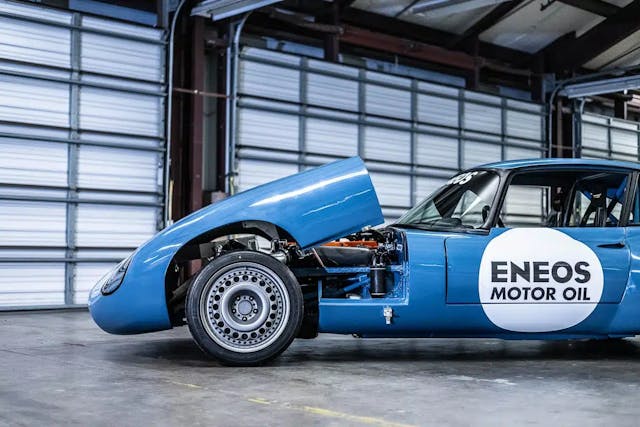
Dr. Frankenstein’s infamous creation combined a terrifying exterior with a tender soul. Car builder and drift racer Faruk Kugay’s brand of mad science is something of an inversion of the fictional Victor’s original formula; the beautiful blue bodywork of his Jaguar XKE 2+2 houses a modified 750-horsepower monster heart transplanted from a Mk. IV Toyota Supra.
It’s equal parts sacrilege and thoughtful homage, depending on your point of view. In essence, however, this is a straightforward restomod that improves on the base blueprint’s performance. The foundational Jaguar E-Type has been upgraded with a more powerful engine, but it maintains a degree of respect for the original layout by keeping a straight-six. The car wears bigger wheels, beefier brakes, more rubber, and bulging fenders to contain it all, but it’s still clearly identifiable as a Jaguar, even without any badging. Squint, though, and you’ll take note of several deviant details from Coventry’s spec.
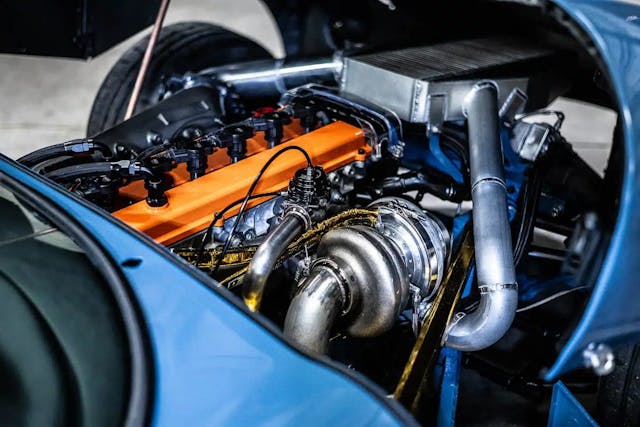
The heavily tweaked, single-turbo Toyota 2JZ-GTE 3.0-liter under the long clamshell snout isn’t the only dose of purist poison here. There are also front brakes borrowed from a Corvette; a ZF five-speed taken from an E36-generation M3; a differential, rear subframe, and rear suspension from BMW’s E60 5 Series; and a carbon-fiber-reinforced, 3D-printed widebody kit filled out by 17-inch Rotiform wheels designed in Southern California.
The overall package, built by Kugay’s Sonoma Raceway-based DevSpeed Motorsports, is a vision that stands in contrast to the all-English E-Types restored and perfected by Eagle, but once you look beyond the mixture of Japanese, German, and American additions, you’ll find that this car hasn’t forgotten its roots, it’s just a more radical reinterpretation. Despite the international DNA, it’s still an evolution of the original formula that dates back to Malcolm Sayer’s and Jaguar’s first concepts in the late 1950s. We especially like the gold paintwork on the 2JZ’s valve cover—a subtle acknowledgement of the early XKE inline-sixes that wore the same scheme.
The most obvious homage to the E-Type’s history? That would be the bodywork. Heavily influenced by the designs of the original factory E-Type Lightweight racing cars which also ditched the road version’s chrome bumpers for a smoother, more aeronautical appearance, the Illumaesthetic-designed widebody is aggressive enough to fit modern wheel and tire sizes without bastardizing the the E-Type’s timeless proportions.
Similarly, while those cavernous rear haunches may be hunkered down over two-piece 17”×10” wheels that would swallow the originals on even the racing versions, the Rotiform STLs (STeeLies, cute.) can easily be seen as a modernized take on the Lightweight’s footwear. The rears are wrapped in 255/40 R17 Bridgestone Potenza RE-71 RS tires, while 17-inch ×8.5-inch fronts wear 225/45 R17s. It is a handsome setup, but we’d love to see what it would look like on smaller-diameter wire wheels and chunkier tires.

The livery is refreshingly simple, especially amid the sea of attention-grabbers at an event like SEMA (where this build was joined two other heavily modified machines sponsored by the Japanese motor oil company, ENEOS). The rear window has the typical smattering of sponsorship logos, but the eggshell blue paint combined with the prominent white “meatballs” on the doors is undeniably classic, perfectly suited for a Lightweight-inspired E-Type.
Most of the elements in Kugay’s E-Type build can be traced back to Jaguar’s original ideas and components, but the connection past the cylinder count and layout is pretty thin. Part of that just comes from necessity to operate in the modern restomod space; in the 1960s, 265 hp was plenty of power for a 3.8- or 4.2-liter sports car. You need a lot more to hang with SEMA show cars in 2023.
Tuned 2JZ motors have been making insane power for years now, and Kugay’s 24-valve twin-cam single-turbo is no exception. The party piece for the 750-hp-capable mill is a small-animal-swallowing BorgWarner EFR 8474 turbocharger, which is supported by CP-Carillo pistons and connecting rods, engine bearings from King, and and interestingly aligned intercooler supplied by Vibrant Performance.
Additional supporting pieces include a new USDM-spec cylinder head with Deatschwerks injectors, a throttle body setup from Driftmotion, a Link G4 Fury ECU, a Lightcell fuel cell, and a complete replacement of the fuel injection system courtesy of Nuke Performance.
Is anyone else imagining Jesse, the “mad scientist” from The Fast and the Furious, rattling off this list of mods from under the Jag’s clamshell hood?
***
Check out the Hagerty Media homepage so you don’t miss a single story, or better yet, bookmark it. To get our best stories delivered right to your inbox, subscribe to our newsletters.
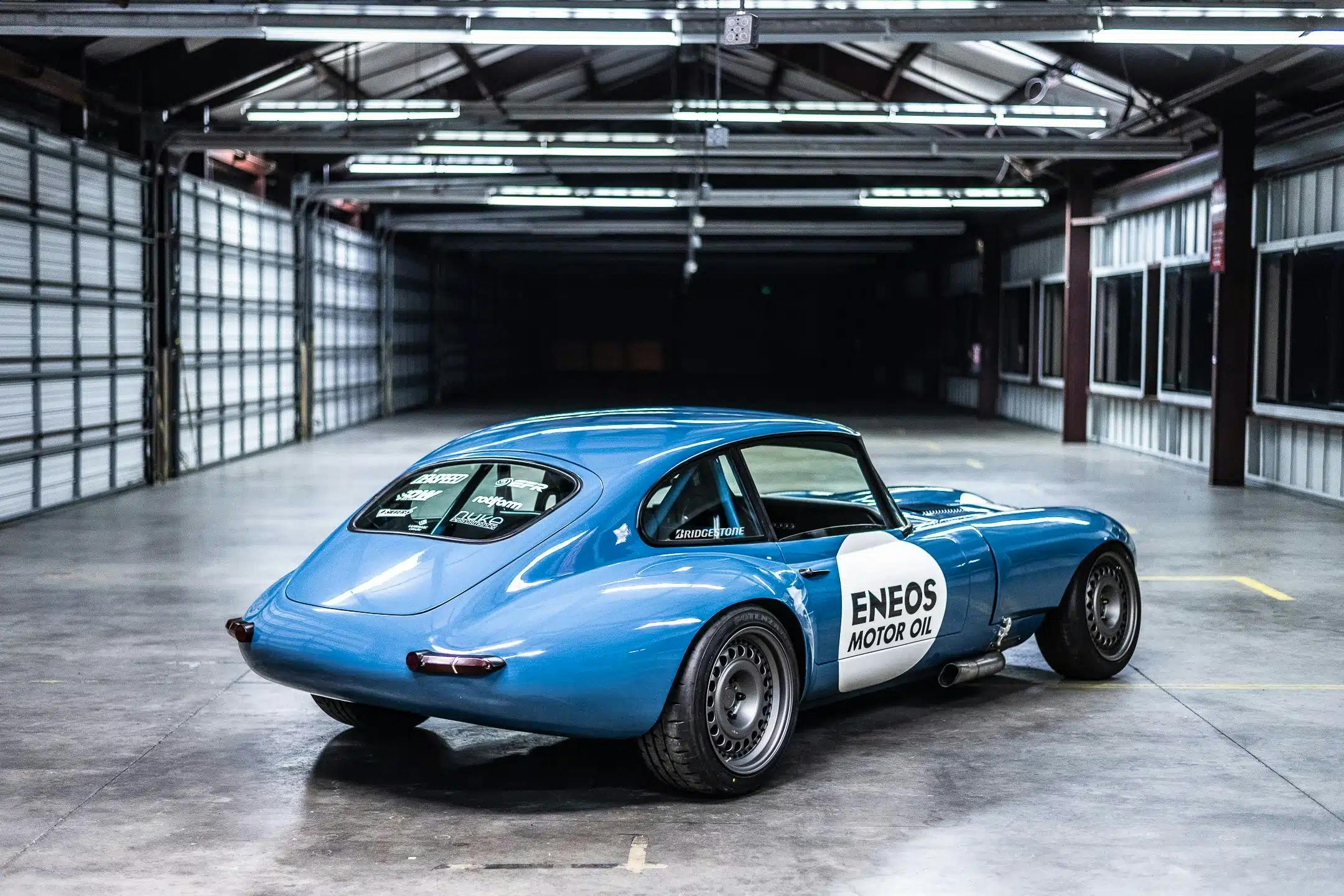
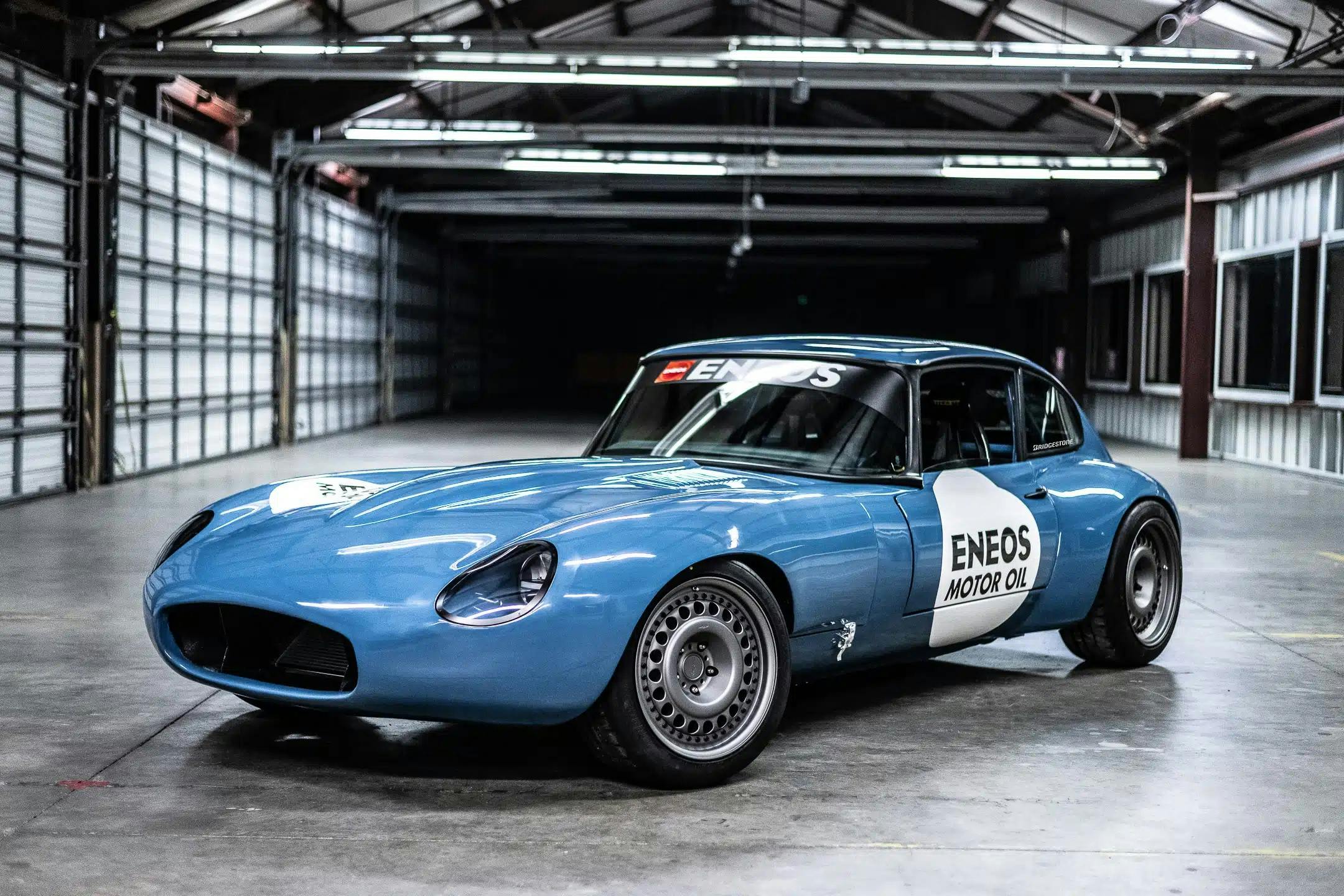
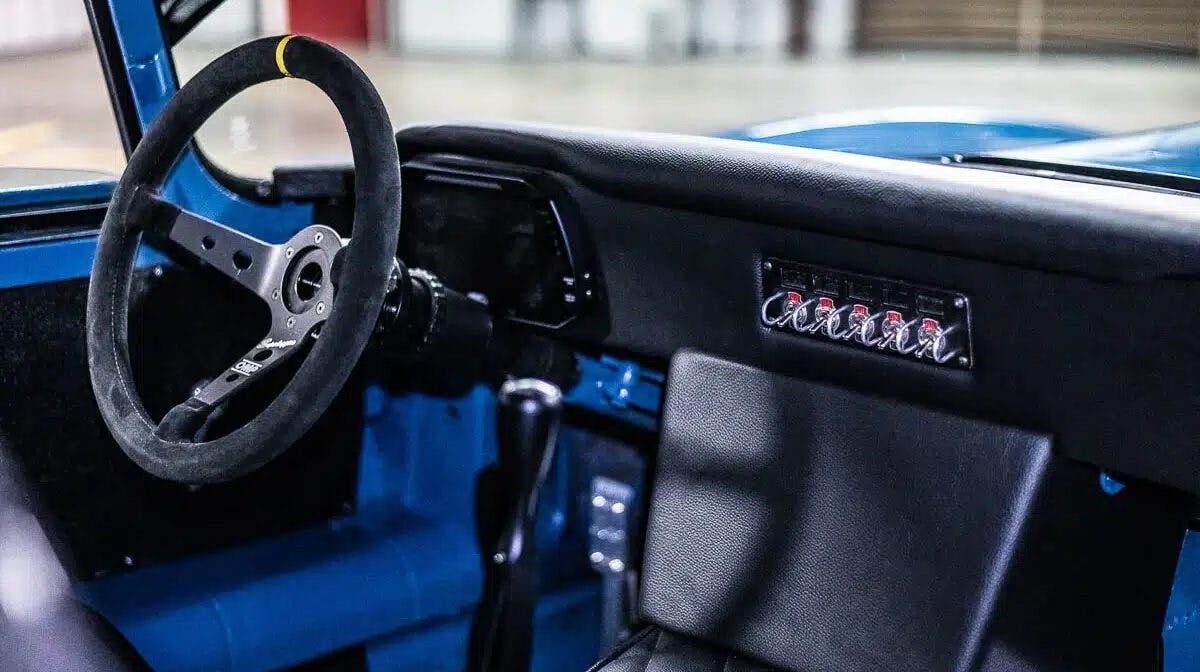
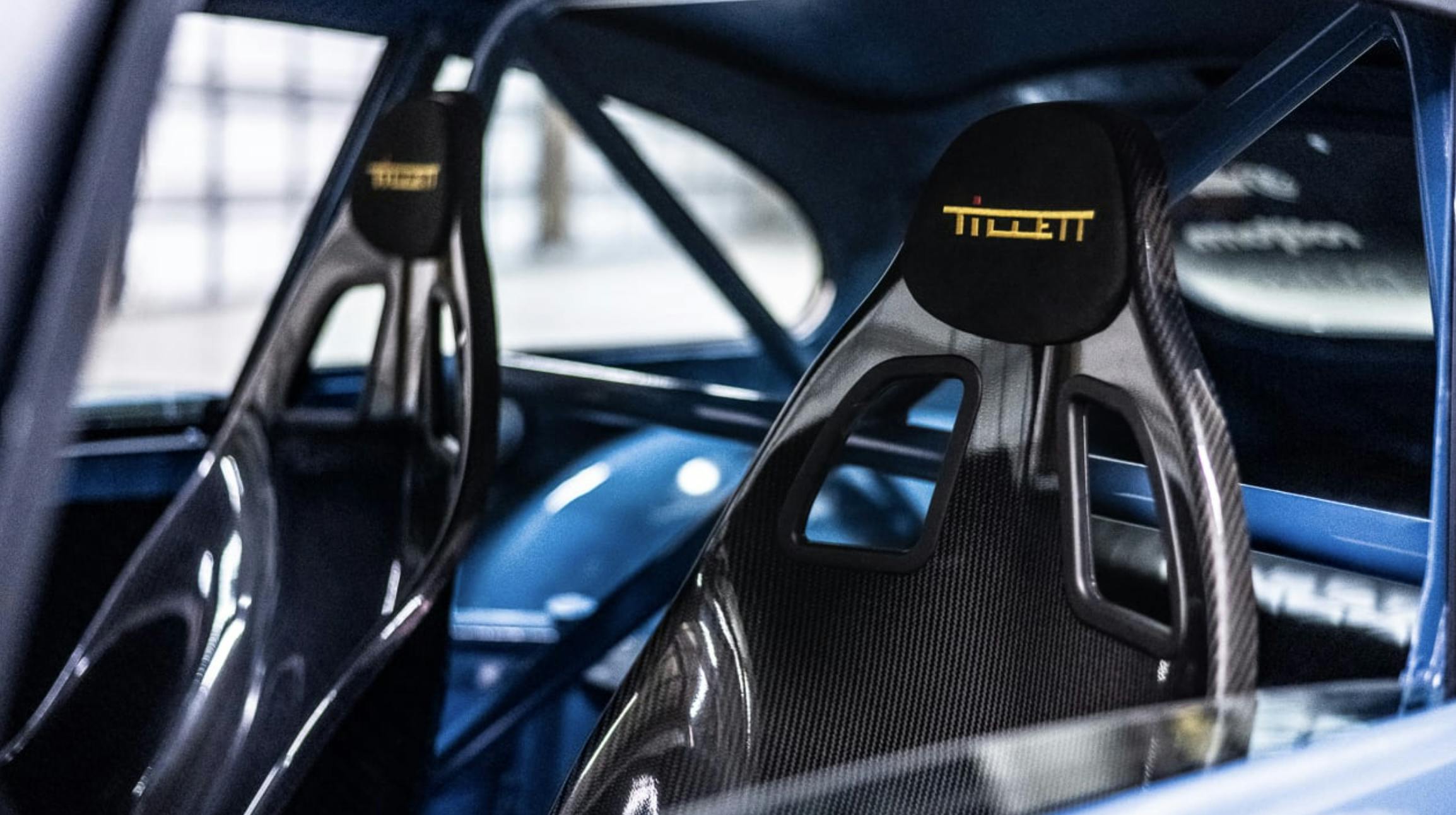


I love Supra’s and 2JZ motors as an owner of a ’97 but I am not a fan of the intercooler placement. It does not seem like a good place for a 750hp setup and also 255 width tires in the back? That works for the stock 320hp Supra Turbo spec, but not for 750hp. A recipe for no traction if I ever saw it. The tires are a great choice, I run them on my car.